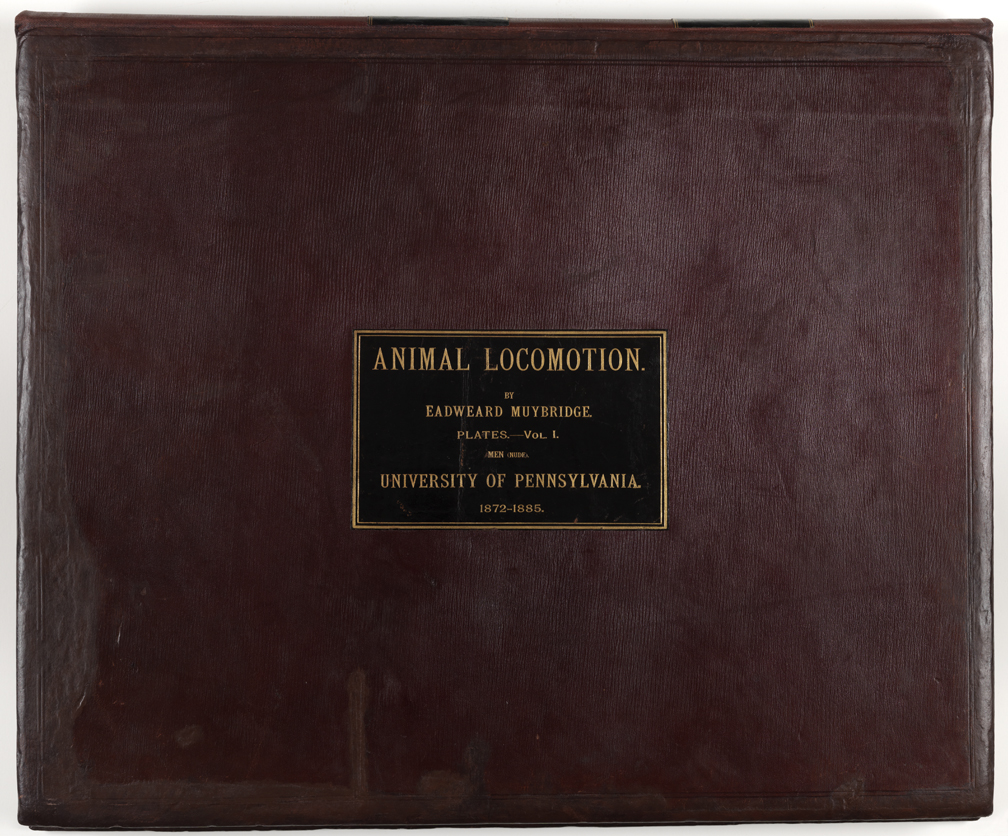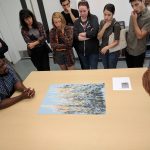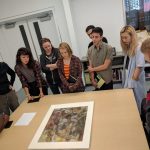Contributed by: Hoang Tran, Director of Archives
PAFA’s collection of prints, drawings, miniatures, photographs, sketchbooks, and illustrated books contains over 13,000 American works on paper, dating from the 18th century to the present day. Works of art on paper are by nature delicate objects that can be irreparably damaged from cumulative exposure to light. As a result, PAFA can only display these works for short periods of time, and then only in low levels of light to guarantee their preservation for future generations.
PAFA’s new Center for the Study of the American Artist provides a dedicated study room to act as a classroom for teaching with works of art on paper in PAFA’s permanent collection, a practice that has been fundamental to PAFA since its inception as America’s first fine art school and museum.
The seminar style room provides a setting to encourage art criticism, discussion, and contemplation.
On some occasions, there are a series of framed works that require viewing in their storage location!

The Center is open to qualified individuals, groups, and classes.
Visits are generally held Monday – Friday during the hours of 10am-4pm, dependent on the availability of staff. We recommend that visitors begin an initial search of PAFA’s collection of works on paper here. For more information, please visit the Study Center.












